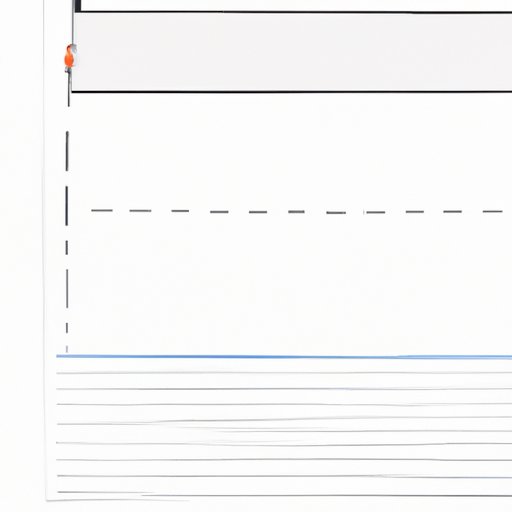Introduction
Starting a paper can be intimidating, especially if you don’t know where to begin. However, with the right guidance, it can become much easier. This article will provide helpful advice for anyone looking to start a paper, from outlining ideas to researching information to writing and editing the final draft.
Outline Your Paper
Creating an outline is essential for organizing your thoughts and structuring your paper. According to the University of North Carolina Writing Center, “An outline provides a map of where to go with the essay. A well-developed outline will show what the thesis of the essay is, what the main idea of each body paragraph is, and the evidence/support that will be offered in each paragraph to substantiate the main points.”
In addition to helping you organize your ideas, an outline can also help boost your productivity. Planning out the structure of your paper before you begin writing can help you avoid getting stuck in the middle or running out of steam by the end. Taking the time to create an outline can save you time in the long run.
To create an outline, first decide on the main points that you want to include in your paper. Then, break those main points down into subsections and use those as the basis for your outline. Finally, make sure to add any additional details that are necessary to support your main points.
Research & Gather Relevant Information
It’s important to conduct research before you start writing your paper. According to a study published in the journal Science Communication, “The more knowledge authors have about their topic, the better able they are to evaluate and use relevant information, as well as craft a more informative and persuasive argument.”
When conducting research, it’s important to focus on finding reliable sources. The best sources to use are usually peer-reviewed journal articles, books written by experts in the field, or reputable websites. It’s also important to be aware of any biases or agendas that might be present in the sources you use. You should also take notes while researching so you can easily reference them when writing your paper.
Write a Strong Introduction
Once you’ve gathered the necessary information, you can start writing your paper. The first step is to write a strong introduction. This is your chance to grab your reader’s attention and introduce them to the topic. To do this, you can use an attention-grabbing hook such as an interesting statistic, quote, or anecdote.
Your introduction should also include a thesis statement. This is a one or two sentence statement that summarizes the main point of your paper. It should be clear and concise and should directly address the topic of your paper. For example, if your paper is about the benefits of exercise, your thesis statement could be something like “Regular exercise has numerous physical and mental health benefits.”
Use Effective Transitions
Transitions are words or phrases that connect one idea to another and help the reader follow along. According to the Purdue Online Writing Lab, “Transitions are used by the author to help the reader progress from one significant idea to the next.” Using effective transitions throughout your paper is important for keeping your reader engaged.
Examples of effective transitions include words or phrases like “moreover,” “in addition,” “subsequently,” and “however.” When used correctly, these transitions can help your writing flow smoothly and make your arguments more convincing.
Edit & Proofread
Once you’ve finished writing your paper, it’s important to take the time to edit and proofread it. This will help ensure that your paper is free of any typos, grammatical errors, or factual inaccuracies. Editing and proofreading can also help you identify any areas of your paper that need to be clarified or expanded upon.
To get the most out of the editing process, it’s best to take a break after finishing your first draft. This will give you a fresh perspective and allow you to catch mistakes that you may have missed before. Additionally, it’s a good idea to have someone else read over your paper to look for any errors or areas that could use improvement.
Conclusion
Starting a paper doesn’t have to be intimidating. With the right guidance, you can easily create an outline, conduct research, write a strong introduction, use effective transitions, and edit and proofread your paper. By following these steps, you’ll be well on your way to writing a successful paper.
In conclusion, starting a paper is an important part of the writing process. If you take the time to plan out your paper, research relevant information, write a strong introduction, use effective transitions, and edit and proofread your work, you will be able to write a successful paper.
(Note: Is this article not meeting your expectations? Do you have knowledge or insights to share? Unlock new opportunities and expand your reach by joining our authors team. Click Registration to join us and share your expertise with our readers.)
